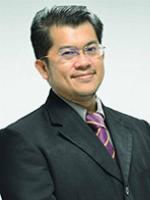

International Minecraft Project for Enhancing the Skills of Global Learners |
Listen and learn : Research paper
Lecture presentation
Kathleen O'brien Dr. Mohd Ali Samsudin Dr. Torrey Trust
This research set Minecraft in a multiplayer mode, enabling players from different places to play together in the same Minecraft realm. This study aims to investigate the effectiveness of Minecraft game-based learning in enhancing the digital skills of global learners.
| Audience: | Chief technology officers/superintendents/school board members, Principals/head teachers, Teachers |
| Attendee devices: | Devices useful |
| Attendee device specification: | Laptop: PC |
| Participant accounts, software and other materials: | Minecraft Education Edition https://education.minecraft.net/en-us/get-started/download |
| Topic: | Games for learning & gamification |
| Grade level: | PK-12 |
| Subject area: | Science, STEM/STEAM |
| ISTE Standards: | For Students: Creative Communicator
|
| Related exhibitors: | Microsoft Corporation |
The sociocultural theory of learning (Vygotsky, 1978) and flow theory (Csikszentmihalyi, 1990) align well with Minecraft. Vygotsky (1978) states that learning takes place when it is social, active and situated. Also, play is conducive to learning (Vygotsky, 1978). Learners interact in role-playing Minecraft environments that allow them to explore social roles (inside and outside of the Minecraft game), form hypotheses, test new ideas, and
develop skills by playing (Gee, 2005; Squire, 2005). Twining (2010) has outlined a modern pedagogy that includes dimensions of ‘learning by being told', ‘learning by doing’, ‘learning through role play’, and ultimately ‘learning by becoming’. Minecraft incredibly is a realistic and immersive environment where learners can learn through role-play experiences. Also, flow theory is a natural foundation for motivation in Minecraft activities for learning. Flow causes the learner to lose time, and goal-directed activity is driven by pure pleasure rather than external rewards (Csikszentmihalyi, 1990). The use of the SAMR model to design the Minecraft activities balances Minecraft's challenge level with the learner’s skill level to create and maintain flow.
The independent variable is Minecraft-Game Based Learning activities. Four key features of Minecraft that catalyze the design of the learning activities are the Redstone, Command Block, Compound Creator and Code Builder. The utilization of these four Minecraft features allows the learners to optimize their 21st-century skills in completing the Minecraft task. This study had employed a quasi-experimental methodology. The dependent variable of this study was 21st Century Skills. A pilot test was conducted to check the reliability of the 21st Century Skills questionnaire, and it was found that the reliability coefficient is high with the Cronbach Alpha’s value of 0.81. The questionnaire will be administered to 30 primary school students from different countries. It will be administered twice, which are before and after the intervention of Minecraft Game-Based Learning activities. Rasch Model analysis technique will utilize to identify the change of 21st-century skills at the level of the item analysis.
The implementation of the project will take about four weeks, on December 2021 and January 2022. It is expected to discover a change in students' 21st Century skills after the program's intervention. Thus, to go in-depth about the shift, the Rasch Model analysis technique can be utilized to identify the type of the 21st Century gain most after the intervention of Minecraft Game-Based Learning activities.
This research has used UDL and SAMR design principles to create a Minecraft learning environment that engages and support learners with different level of readiness in playing Minecraft. As Minecraft is a popular game, not all students have experience playing Minecraft; thus, the introduction of Minecraft Education to the learners should consider their Minecraft experiences. An empirical data about the effectiveness of Minecraft-Game Based Learning activities can be obtained in-depth by utilizing the Rasch Model data analysis technique at the level of item analysis.
Bond, T. & Fox, C. (2007). Applying the Rasch Model. Lawrence Erlbaum Associates. New Jersey.
Csikszentmihalyi, M. (1990). Flow: The psychology of optimal experience. New York, NY: Harper Perennial.
Gee, J. P. (2005). What would a state of the art instructional video game look like? Innovate: Journal of Online Education, 1 (6), 1.
Squire, K. (2005). Changing the game: what happens when video games enter the classroom? Innovate: Journal of Online Education, 1 (6), 5.
Twinning, P. (2010). Virtual worlds and education. Educational Research, 52 (2), 117-122.
Vygotsky, L. S. (1978). Mind in the society: The development of higher mental processes, Cambridge, MA: Harvard University Press.

I am a lecturer from the School of Educational Studies, Universiti Sains Malaysia. I am passionate about integrating STEM into Minecraft. I am also a Microsoft Innovative Education Expert. Currently, I am organising an International Minecraft Project to provide young learners from all over the world to collaborate in playing Minecraft. The aim is to enhance the young learners' intercultural competency to prepare them as global learners in the future. Feel free to contact me if you are interested in joining: alisamsudin@usm.my